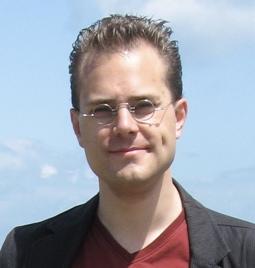
Thomas Blumensath
- Position
- Senior Lecturer
- Institution
- Institute of Sound & Vibration Research (FEE)
- Contact
- Complete this online contact form to contact Thomas.
Mathematical, Statistical and Computational Foundations of Signal Processing
My research interests revolve around topics in the Mathematical, Statistical and Computational foundations of Signal Processing. I am partuicularly interested in methods from harmonic and functional alanlysis, geometry, optimisation, Bayesian statistics and probability theory and their application to problems in sampling, imaging and audio signal processing.
Compressed sensing, sampling and constrained inverse problems
Signals such as sounds, images and electromagnetic waves are at the heart of almost every scientific and engineering discipline. They are fundamental to modern medical technology as well as most technologies we encounter in our daily lives. The acquisition, transmission, storage, processing and interpretation of signals is therefore of the utmost importance. In our digital age, most storage, transmission and processing is done in the digital domain. This means that information about natural phenomena has to be measured and converted into a format suitable for digital processing.
I am working on novel approaches that exploit signal structure to represent signals using far fewer measurements than would be required by traditional approaches. There are many possible applications for these new techniques, for example, in medical imaging, reducing the number of measurements can significantly reduce the risk to patients. My research focuses on three main aspects of the problem; 1) building signal models that encapsulate as much prior domain knowledge as possible, 2) designing sampling systems that measure the relevant signal information and 3) developing efficient computational strategies that use the signal models to reconstruct the signals from the measured information. This work extends many ideas recently proposed in the field of compressed sensing to more general signal models and more general Hilbert space settings.
My recent contributions to this area have been in the development and study of provably efficient numerical algorithms for sparse and structured inverse problems and I have been one of the main drivers behind the extension of many of the ideas developed in compressed sensing to more general constraint sets and to a more general Hilbert space setting.
An important part in the development of novel sampling themes and inverse methods is the development of efficient computational optimization algorithms. One particular approach I have been pursuing are greedy methods. Here I have been developing two approaches, Pursuit type algorithms and projection based methods. Not only can such methods be highly efficient, they also offer strong performacne guarantees.
Human Brain Mapping
I am working with the FMRIB Analysis group at the FMRIB Centre at the University of Oxford, where I am working on novel image analysis tools to study brain connectivity and parcellation. This work is part of the the human connectome project.
Links
My software page can be found here: Sparsify
A list of publications can be found here: Publications
And my oxford compressed sensing page is here: Oxford Compressed Sensing
Thomas's team members
 Joshua Greenhalgh Joshua GreenhalghPostgraduate Research Student, Engineering Sciences (FEE) |
